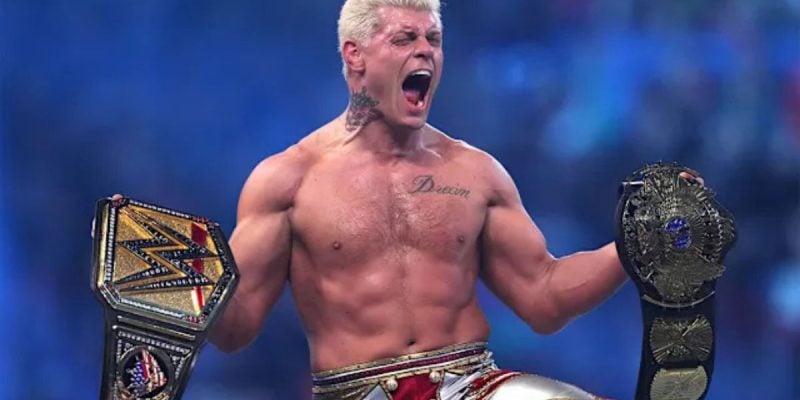In 2026, the world of sports entertainment will enter uncharted territory. WWE—long known for its chaotic brawls, gritty storylines, and sometimes controversial adult themes—will become a premium staple on ESPN, a Disney-owned network.
The five-year, $1.6 billion deal brings WWE’s major events like WrestleMania, SummerSlam, and Royal Rumble exclusively to ESPN’s new $29.99/month streaming platform.

Related: Dwayne Johnson Goes All In on Disney After Failed WWE Comeback
Can WWE stay edgy, sexy, and violent under Disney’s family-friendly empire?
1. The Disneyfication Dilemma: A Tale of Two Audiences
Disney has always walked the fine line between mass appeal and strict brand control. Its content guidelines are notoriously conservative, emphasizing family values, minimal violence, and a sanitized viewing experience. WWE, on the other hand, thrives on blood feuds, brutal chair shots, risqué characters, and controversial promos.
Think back to the Attitude Era, or even modern street fights like Cena vs. Rhodes at SummerSlam 2025—a violent, emotionally charged match that spilled into the crowd and backstage.
Cena wielding crutches, Cody Rhodes hitting finisher after finisher, and Brock Lesnar showing up for a surprise post-match F-5—these are moments born from creative freedom, not corporate sterilization.
With Disney now calling the streaming shots, there’s a growing fear that those moments will be toned down, if not entirely erased.
2. Sex Appeal and the Risk of Sanitization
WWE has long used sex appeal—through entrances, outfits, and character work—to draw viewers. It’s part of the spectacle, and always has been, from Sable in the ’90s to today’s stars like Becky Lynch and Naomi, who walk the line between empowered performers and sex symbols.
Disney, however, may not be so tolerant.
While no official statements have been made about content changes, fans are already speculating about possible wardrobe restrictions, limited physicality in women’s matches, or censorship of provocative promos.
If matches like Lynch vs. Valkyria, which included chains, crowbars, and fire extinguishers, are considered too intense or too “adult,” they may not survive in their current form on a Disney-owned platform.
3. Violence: The Heartbeat of Wrestling Drama
WWE storytelling relies on violence as a narrative device. It’s how grudges are settled, how underdogs triumph, and how legends are made. At SummerSlam 2025, nearly every title match involved either hardcore rules, tables, ladders, or steel cages.
From the Wyatt Sicks’ weapon-fueled tag team brawl to Fatu vs. Sikoa’s brutal steel cage match, the mayhem is part of what sells tickets and keeps fans glued to their screens. Will Disney allow unfiltered violence like this to air on ESPN’s DTC platform?
They’ve handled the UFC partnership relatively well, but even that comes with strict guidelines, disclaimers, and time slot regulations. WWE’s scripted violence—especially its use of weapons and dramatic blood spots—may not pass the Disney test.
4. ESPN’s Streaming Bet: A New Era or a Gimmick Gone Too Far?

From a business perspective, this move is massive. ESPN is betting big on WWE to help anchor its direct-to-consumer future. Priced at $29.99 per month, the platform is expected to cater to die-hard sports fans, offering everything from NFL content to UFC and now, WWE.
As Mark Shapiro, TKO’s COO, put it: “We are proud to reinforce the ‘E’ in ESPN.” But this raises another issue:
Which “E” are we talking about—“Entertainment” or “Earmuffs for the kids”?
WWE fans want raw, unpredictable action—not overproduced, sugarcoated matches. If ESPN tries to align WWE more closely with its traditional sports portfolio (as it did with UFC), the company could lose the magic that makes it unique.
5. What Happens to the Grit, the Chaos, the Edge?
WWE has gone through PG phases before. From 2008 to the mid-2010s, the product was largely tamed to appeal to sponsors and younger audiences. But in recent years, with the rise of Triple H’s creative direction, the product has taken on a more mature tone again.
Hardcore stipulations, blood returns, longer matches, and nuanced characters have revitalized interest among longtime fans.
Will that momentum now be sacrificed on the altar of corporate safety?
If SummerSlam 2025 is any indication—full of street fights, high-stakes storytelling, wild weapon use, and emotionally raw promos—the WWE still has its edge. But 2026 may test whether that edge is blunted by the Disney brand.
6. Hope on the Horizon: A Balanced Future?
Not all hope is lost. Disney may be more willing than expected to embrace WWE’s unique identity—especially if the money talks. ESPN already hosts UFC, which hasn’t been significantly watered down, and both Shapiro and Nick Khan have emphasized creative continuity.
WWE will still produce its events, and there’s a chance they will push back on any attempted censorship. Plus, Disney owns Hulu, FX, and now stakes in streaming platforms with mature content. So there is precedent for letting edgier content exist within the Disney ecosystem.
Ultimately, the success of this partnership may hinge on fan reaction and subscriber retention. If ESPN’s version of WWE feels neutered, expect vocal backlash—and possibly declining viewership.
Can WWE Keep Its Soul Under Disney’s Shadow?

The Disney-ESPN deal is, undeniably, a massive financial win for WWE. But in a product where chaos, violence, and adult themes are essential storytelling tools, corporate influence must be handled delicately.
Fans aren’t worried WWE will disappear—they’re worried it will become unrecognizable.
In 2026, we’ll find out whether the Mouse lets the mayhem live—or if this new era ends up being more PG than PLE.
What do you think? Will Disney preserve WWE’s edge or tame the beast? Let’s hear your thoughts below.
